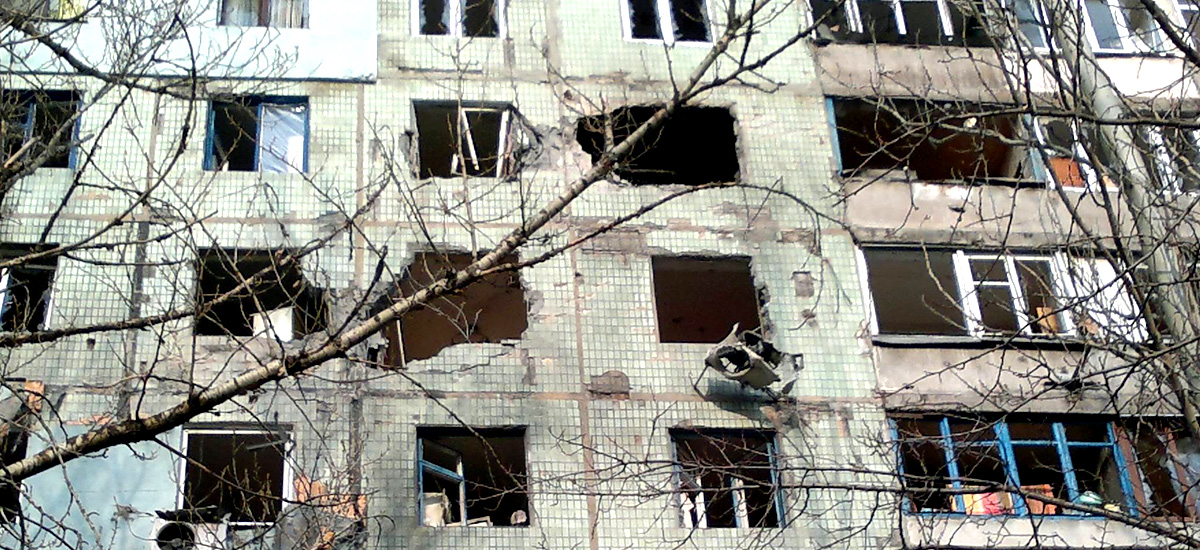China’s aggression tests US pact to defend Philippines
The growing tension between the Philippines and China has raised the question of whether the U.S. is willing to defend its ally against Chinese aggression, particularly in disputed territories of the Pacific Ocean. The U.S. and the Philippines have a mutual defense treaty, first signed in 1951, that obligates the countries to stand together in...

The growing tension between the Philippines and China has raised the question of whether the U.S. is willing to defend its ally against Chinese aggression, particularly in disputed territories of the Pacific Ocean.
The U.S. and the Philippines have a mutual defense treaty, first signed in 1951, that obligates the countries to stand together in the event of an armed attack in the Pacific.
But it has not always been clear if disputed reefs and territories in the South China Sea are included in the pact, or whether Washington is willing to go to war with China over the Philippines, especially as the U.S. military is already preparing for a potential war with Chinese forces over Taiwan.
Secretary of State Antony Blinken, during a July visit to Manila, emphasized the U.S. will uphold its treaty obligations.
“That extends to armed attacks on Filipino armed forces, public vessels or aircraft — including the coast guard — anywhere in the Pacific, including the South China Sea,” he said.
Experts who are closely watching the escalation between the Philippines and China agree the U.S. has been clearer since the Trump administration that it would defend its ally if it came down to it, but Beijing is increasingly pushing it beyond the theoretical.
“It's only a matter of time before China escalates to the point of actually killing American allies in the region,” said Markus Garlauskas, director of the Indo-Pacific Security Initiative at the Atlantic Council. “China's approach is very incremental and they're purposely trying to make it hard to define the point where a stronger response is required.”
“The risk is very real that there could be a major escalation, but that China's not going to make it easy for us or make it clear cut,” he continued.
In recent months, Chinese boats have been accused of ramming Philippine ships and attacking Filipino sailors with water cannons and, in one scenario, machetes.
Philippines President Ferdinand Marcos Jr. said the threat from China is growing in a wide-ranging Bloomberg interview earlier this year.
“Since the threat has grown, we must do more to defend our territory,” he said.
There is likely to be hesitancy in Washington to begin a potentially brutal war with China, which boasts a larger navy than the U.S. and is inextricably intertwined with the American economy, at least in the short term.
Jeffrey Ordaniel, director of Maritime Programs at the Pacific Forum, said there is already a “big question mark” of whether the U.S. would defend Taiwan, particularly after debate has raged among Republicans in Washington over supporting Ukraine.
“If you're talking about Taiwan, a democracy of 23 million people … what would make the Philippines believe that the United States would be willing to die for islands or island rocks?” he said.
It’s not clear how domestic politics could also affect any U.S. intervention, including if a crisis were to break out under a potential second administration of former President Trump, who has been more cautious about defending American allies like Ukraine.
But Republicans and Democrats alike are hawkish against China, and Trump’s former secretary of state, Mike Pompeo, was the first to clearly lay out that the U.S. would defend the Philippines anywhere in the Pacific.
“There is a strong China hawk element among Trump's advisors,” said David Maxwell, vice president at the Center for Asia Pacific Strategy. “That would weigh differently for Chinese malign activities in the Philippines versus Russia and Ukraine. … I think there will be a willingness to stand up to China.”
China claims control over most of the South China Sea despite a 2016 international ruling rejection. It has disputes with several countries in the Pacific, including Vietnam, Malaysia and Brunei, but in recent years, its aggression against the Philippines has sparked the most concern.
Maxwell said the potential for miscalculation between the Philippines and China is “much higher than miscalculation between China and Taiwan,” emphasizing the need for stronger deterrence, which he argued the Biden administration has failed to do in Ukraine and the Middle East.
“Unfortunately, my criticism of this administration is that the prime directive for all national security and foreign policy is prevent escalation,” he said. “China is looking at our desire to prevent escalation [and that] actually gives them a lot of room to move, a lot of flexibility and a lot of freedom of action.”
The U.S. has slammed China for aggression after each spat with the Philippines but so far has decided against intervention.
Still, the risk is growing that China, under authoritarian leader Xi Jinping, will continue gray zone warfare tactics aimed at coercing the Philippines and dominating the South China Sea.
Ordaniel, from the Pacific Forum, said China was “pushing the envelope” with gray zone tactics “until at some point you have a Chinese presence everywhere.” He argued it was critical for both the Philippines and the U.S. to sit down and discuss ways to increase deterrence.
“The Philippines are not taking advantage of its alliance with the United States to increase deterrence and the United States is not being … forceful enough to tell the Philippines that, ‘Hey, our alliance credibility is on the line,’” he said.
“The responses have not been adequate [and] China is going to continue to push the envelope, because essentially, there is impunity.”
Ordaniel pushed for the U.S. to step up its diplomatic and militarily efforts to prevent China from increasing its aggression in the South China Sea, pointing to the need for U.S. naval escorts.
China and the Philippines have primarily clashed over three disputed reefs in the South China Sea: Second Thomas Shoal, Sabina Shoal and Scarborough Shoal, the latter of which was the site of a Tuesday attack in which Chinese Coast Guard forces sprayed a Philippine boat with water cannons. China seized Scarborough Shoal in 2012, but it remains a flashpoint for conflict.
Blinken, speaking Thursday in Laos, said the U.S. remains “concerned about China’s increasingly dangerous and unlawful actions in the South and East China Seas, which have injured people and harmed vessels” and “contradict commitments to peaceful resolution of disputes.”
The most intense fighting has erupted at Second Thomas Shoal as the Philippines has reinforced the Sierra Madre, a beached ship run aground in 1999 and used as a supply station to enforce Manila's claims on the shoal.
China has sought to prevent resupply missions to the Sierra Madre by blocking and harassing ships with ship ramming maneuvers, water cannons and laser pointers, among other nonlethal weapons.
But a June 17 conflict saw Chinese forces ram and board two boats and seize weapons from Filipino sailors. Chinese attackers also struck the ship and crew with machetes in a skirmish that saw one Filipino sailor lose his thumb.
About a month later, the sides reached an agreement allowing the Philippines to supply the ship under China's watch.
Benjamin Blandin, network coordinator of Yokosuka Council on Asia Pacific Studies, said the agreement was troubling.
“This is all sort of legitimizing the very claim China has toward its neighbors,” he said. “It's a short-term solution that avoids conflict in the short term, but it doesn't solve anything.”
While tensions have eased at Second Thomas Shoal, they are still flaring up at Sabina Shoal, where Manila and Beijing have traded accusations of ramming each other’s ships.
A September standoff saw the Philippines back down from keeping its coast guard ship, the Teresa Magbanua, in Sabina Shoal amid fears of China building up its resources in the area. China had put some 200 ships on standby at the Spratly Islands, where it maintains some of its vast artificial island military bases, before the Philippines sent the ship away.
The U.S. has offered to assist the Philippines with military escorts in the South China Sea, but Manila has increasingly pushed to resolve the matters on its own.
Blandin said he supported the Philippines requesting assistance from Washington only in dire situations.
“It's important to keep requesting assistance from the U.S. to really extreme cases of tensions, where really the Philippine Navy or Coast Guard would be overwhelmed and incapable of reacting, or if there were people actually dying,” he said.
He also pointed to concerns that “the U.S. is not exactly in a position of strength,” in the Indo-Pacific because the Navy is struggling to catch up to a larger Chinese naval force and has not fully pivoted resources and troops to Asia to counter Beijing.
While there are concerns of escalation, experts say a Chinese conflict with the Philippines is likely to erupt at the same time as a Taiwan scenario.
The U.S. has nine bases across the Philippines, including four it announced last year that include a site in Luzon some 300 miles from Taiwan. American forces operate in the Philippines on a temporary, rotational basis.
But the bases, and the proximity to Taiwan, make the Philippines a key ally, along with Japan and South Korea, in the event of a war on the self-governing island nation, which China sees as historically part of the mainland and is preparing its forces to be ready to potentially attack or coerce in 2027.
Alp Sevimlisoy, a millennium fellow at the Atlantic Council, said China seeks to “create multiple fronts with Taiwan.”
“It's banking on the fact that they can use conflict escalation moments and flash points with crucial U.S. allies simultaneously with a blockade with Taiwan,” he said. “If it only uses [the strategy] as a smoke screen for a wider Taiwan conflict, then even that makes the conflict even more difficult for us to counter.”



